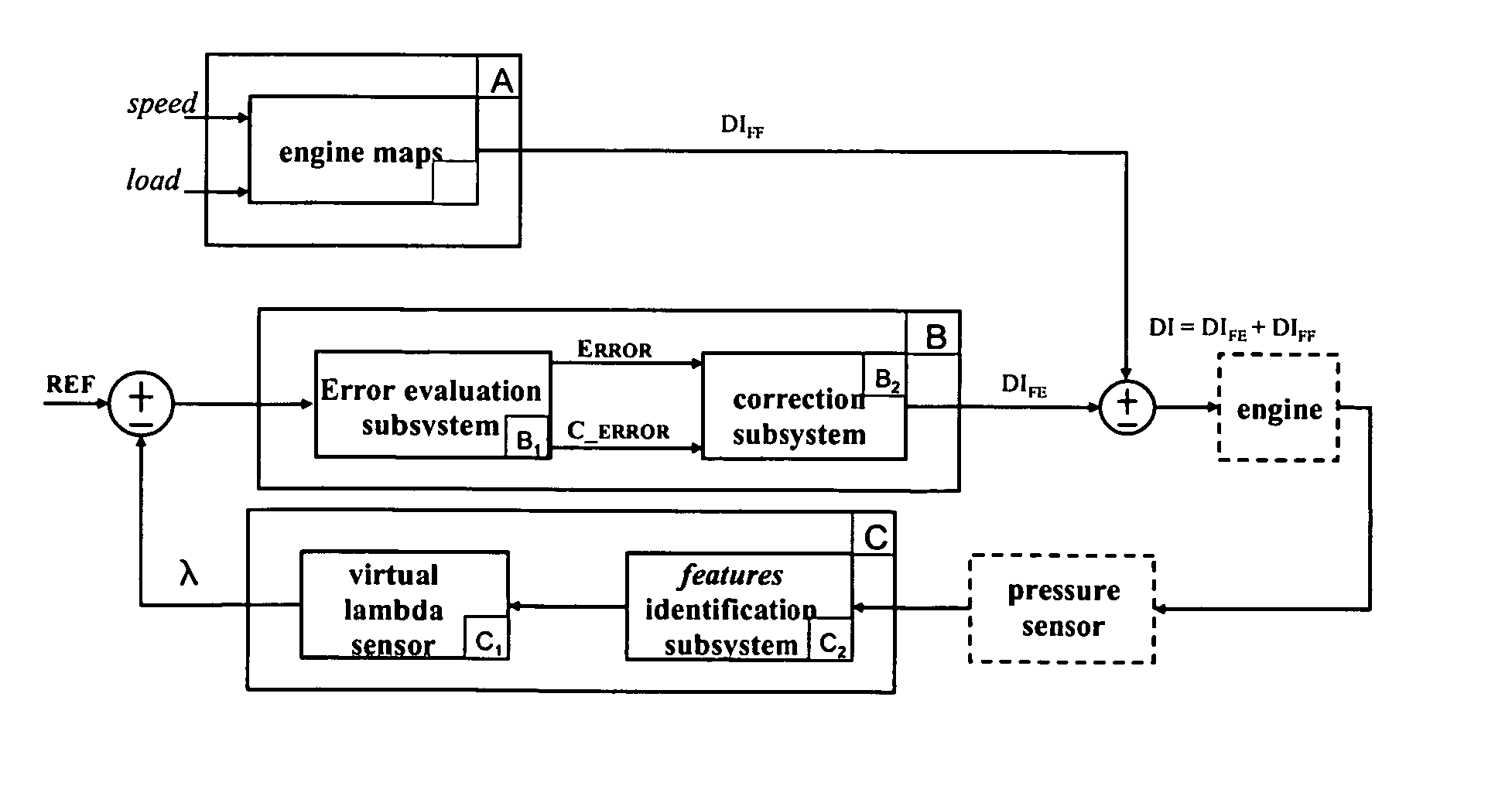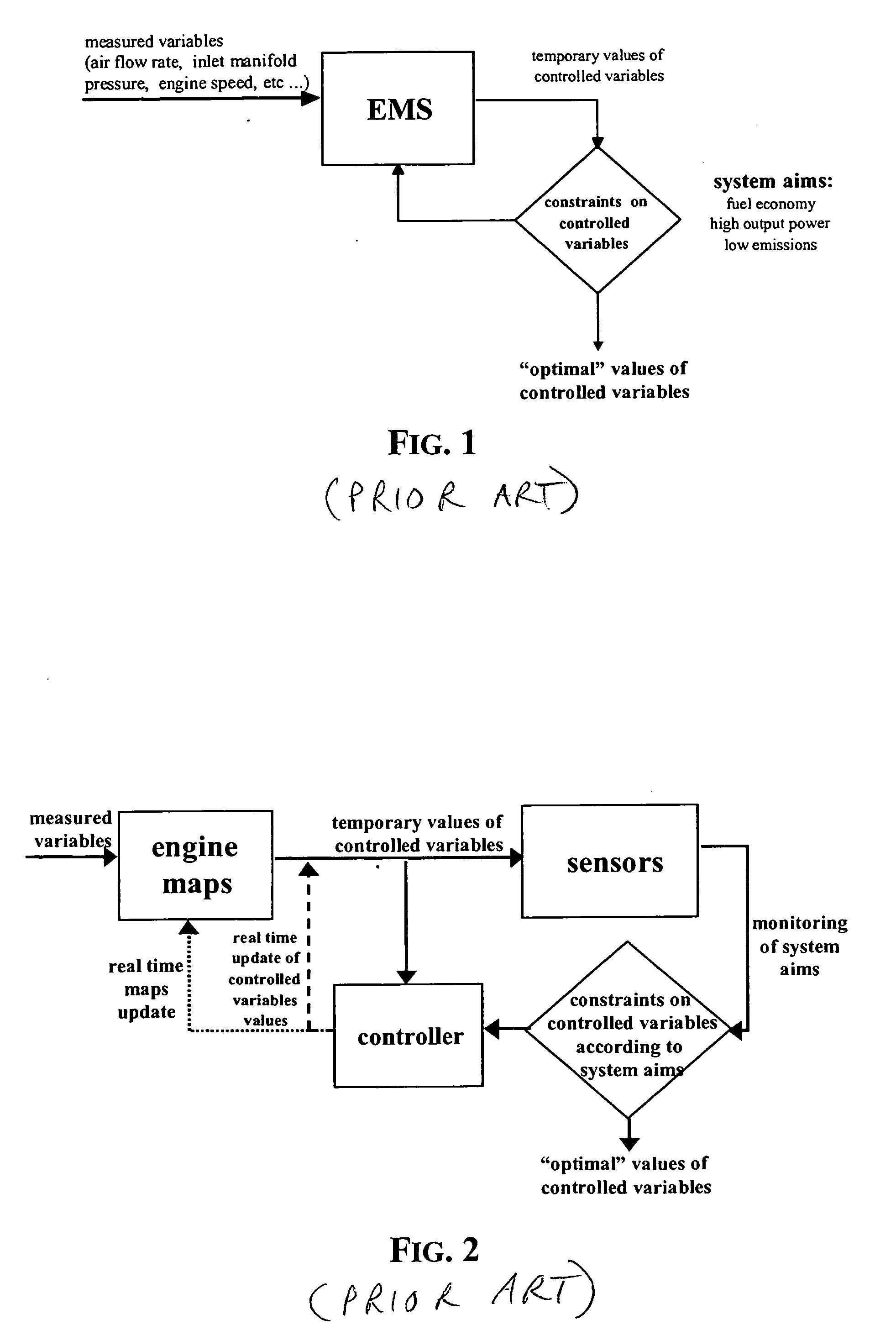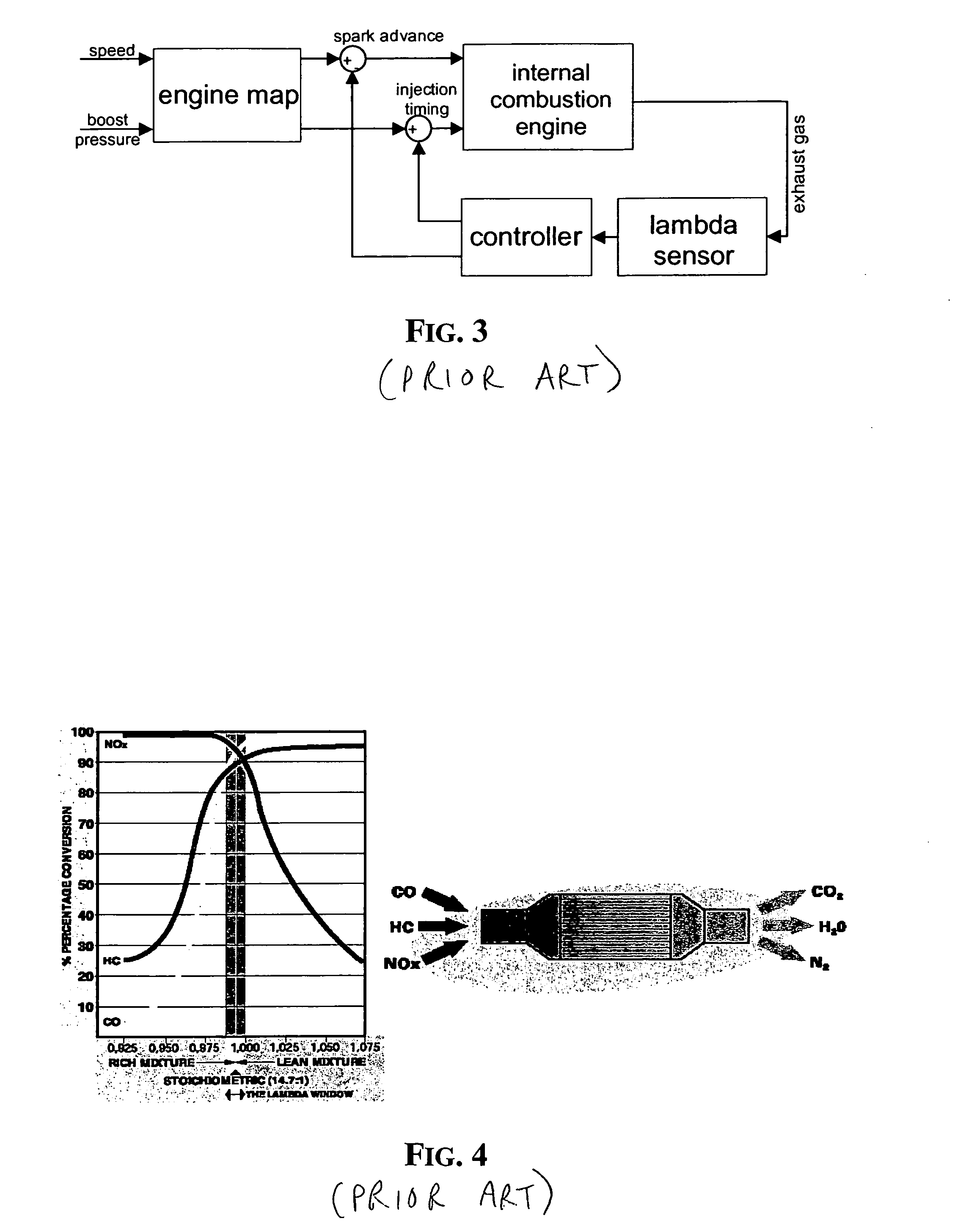Method and associated device for sensing the air/fuel ratio of an internal combustion engine
- Summary
- Abstract
- Description
- Claims
- Application Information
AI Technical Summary
Benefits of technology
Problems solved by technology
Method used
Image
Examples
Embodiment Construction
[0084] According to this invention, the inputs for modeling a virtual lambda sensor are obtained from an engine cylinder pressure signal generated by a pressure sensor, such as for instance the integrated pressure sensor disclosed in [21]. According to the invention, a virtual device capable of sensing the air / fuel ratio is based on a learning machine trained according to the scheme of FIG. 9.
[0085] Of course, it is possible to train the learning machine using also characteristics of other signals (the speed of the engine, for instance) in addition to the characteristics of the waveform of the pressure in a cylinder, but surprisingly it has been found that the pressure waveform features alone permit to achieve an outstandingly accurate assessment of the air / fuel ratio.
[0086] Indeed, a wealth of operating parameters of the engine could be extracted from the waveform of pressure in a cylinder. Of course, it is not convenient to consider all of them because the computational load of ...
PUM
 Login to View More
Login to View More Abstract
Description
Claims
Application Information
 Login to View More
Login to View More - R&D
- Intellectual Property
- Life Sciences
- Materials
- Tech Scout
- Unparalleled Data Quality
- Higher Quality Content
- 60% Fewer Hallucinations
Browse by: Latest US Patents, China's latest patents, Technical Efficacy Thesaurus, Application Domain, Technology Topic, Popular Technical Reports.
© 2025 PatSnap. All rights reserved.Legal|Privacy policy|Modern Slavery Act Transparency Statement|Sitemap|About US| Contact US: help@patsnap.com



